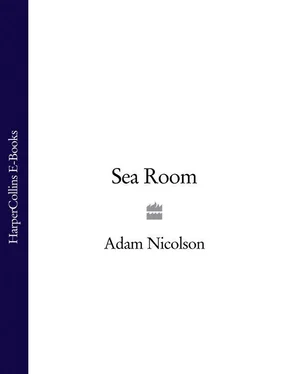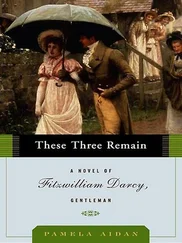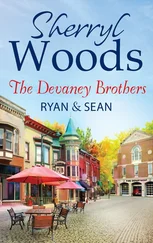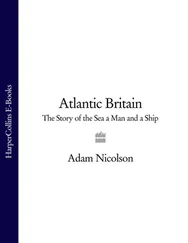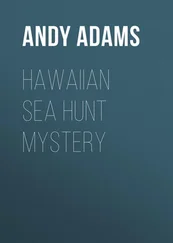A famous and beautiful Gaelic song, still sung at ceilidhs and in the great annual competition, the Mod, can stand for all the laments over those who have drowned in the Shiant seas. In the spring of 1786, the young and handsome Allan Morrison, a shipmaster from Stornoway, who usually traded between Lewis and the Isle of Man, took his boat down the coast of Lewis to Scalpay, where he was to be engaged to Annie Campbell, Campbell of Scalpay’s daughter. In the Stream of the Blue Men, off the Shiants, the wind turned, as it does, his boat was swamped and he and all his crew drowned. Annie Campbell, broken with grief, wasted away and soon died herself. There is no burying ground on Scalpay. The soil is too thin and still today the Scalpay dead are carried over to the sandy soils on the Atlantic side at Luskentyre to be buried. Annie Campbell’s father took her body in a coffin by boat to the most distinguished of all the burying grounds in Harris, at Rodel, in the south-eastern corner of the island. On the way there, another storm came up at them and to lighten the boat, the coffin had to be thrown overboard.
Soon afterwards, the body of Allan Morrison was found washed up on the shore of the Shiants and a few days later Annie’s body was found at the same place.
The song – this is the Shiants’ only brush with Hollywood: it was sung in the film Rob Roy – is in the voice of Annie Campbell, grieving on Scalpay for her lost lover. It survives in many versions, some of them still sung in Cape Breton, in Canada, where the descendants of emigrating Hebrideans took it in the nineteenth century.
Brown-haired Allan, ó hì , I would go with thee; hó rì rì rì u ho, e o hùg hoireann ó , Brown-haired Allan, ó hì , I would go with thee.
I am tormented,
I have no thought for merriment tonight
but only for the sound of the elements
and the strength of the gales …
And brown-haired Allan, my darling sweetheart,
I heard you had gone across the sea
on the slender black boat of oak …
Brown-haired Allan, my heart’s darling,
I was young when I fell in love with you.
Tonight my tale is wretched.
It is not the tale of the death of cattle in the bog
but of the wetness of your shirt
and of how you are being torn by the whales.
I would drink a drink, in spite of everyone,
of your heart’s blood,
after you had been drowned.
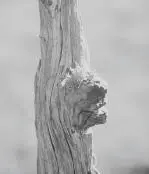
I TAKE THE BOAT SLOWLY in to the beach. Her iron-shod stem slides, grates and then halts on the stones. I jump ashore and push the small grapnel anchor between the shingle. It is a way of pinning the boat to the island. However seasick I feel, this of course is the moment. I am walking at last on the familiar shore, awash with the familiarities of the place: the slip of one stone against another, the smell of the seaweed rotting in the nostrils, knowing without even watching them the flickering presence of the birds as they take this route between the islands, the great inviting wings of land spreading out on all sides, the surge and draw of the sea on the shingle. And above all that, the core sensation of island life: knowing the world is held at arm’s length by that sea, afloat on the privacy, buoyed up by the knowledge that here I am alone. It can, oddly enough, be a shared feeling. I remember arriving here one morning with John Murdo Matheson, the young shepherd from Gravir, a man, if this is possible, more in love with the Shiants than I am. We were waving goodbye on the beach to the fishing boat that had brought us, watching its wake curve around the rocks of Garbh Eilean, and he said to me, not looking at me, but our shoulders rubbing, ‘It’s as if the world’s been cut off with a knife, isn’t it, Adam?’
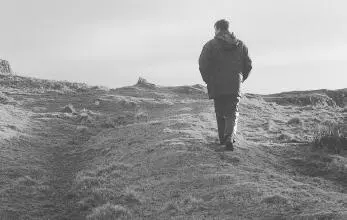
But now I am alone and I inspect the place, the first time I have been here since the previous autumn. It is like looking through old letters, a slowly growing recognition of a well-known thing, its atmosphere stealing up on you, enveloping you like the smell of bread from an oven. Your body remembers the movements of island life: the hauling of the boat up the beach, the tying it on to the mooring ring, the touch of sun for a moment, the endless wind, as if you were listening all day to the whispered roaring in a shell held up to your ear.
But the beach looks odd. In summer, it extends between Garbh Eilean and Eilean an Tighe in a smooth and well graded expanse of pebbles, cleanly sifted and sorted in a shallow grey arc between the rocks of the islands on either side. Now, in April, it looks as if a team of bulldozers have been at work over the winter. The enormous volume of stone which in summer makes up the centre of the beach, one hundred and fifty yards of it, thirty feet high and a hundred across, has been shouldered aside, roughly barged into mounds which are humped up against the rock buttresses of the islands. This is the work of the winter storms, an unthinkable battering. A third of the fence posts along the cliff edge are broken off at their base, pieces of perfectly good square-section timber, four inches by four, snapped and held now by the wire they were meant to support. Posts don’t last long. After they have been here a year or two, the winter wind has so picked away at the wood that they have returned to younger versions of themselves. The little side stems of slightly harder timber which had been buried by later growth as knots, have withstood the eroding wind and now stand out from the shrunken post as truncated branches. Each post looks like a fossil tree.
I unload Freyja , piling my belongings on the beach above the rising tide. It takes half an hour. Then I row Freyja out to a depth where she will not ground at low tide, anchor her there, inflate the dinghy, row ashore, pull the dinghy up the beach and tie it fast to the wrought iron rings which are hammered into cracks in the rocks.
The landing beach is two hundred yards or so from the house and everything must be carried up over a small rocky rise and then along a level grassy platform to the door of the house. It is, through sheer repetition, the most familiar two hundred yards of the islands, as known to me as the knots in the desk on which I write or the feeling of my teeth to my tongue: the slightly awkward shuffles across that rock step; the point where the path crosses a smooth piece of turf, next to the boulder on which a pincushion of thrift produces two or three blooms in the summer; the little spring, just beyond the small ridge that separates it from the beach, where the path curves round above the shore. The spring is stone-lined, with rushes fringing its edges and a flat stone placed at its lip, on which a bucket can stand while you fill it. Past two ruins of abandoned houses, through a patch of nettles and there, on its little coastal shelf, with the silverweed thick around it, and all the pens and fences in which the sheep are gathered for the marking of the lambs in May, the shearing in July and the autumn cull, you come to the house.
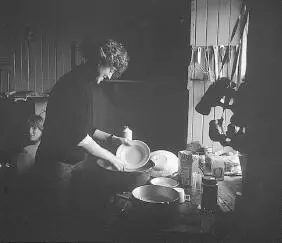
Although I love the building, it is in truth, little more than a shelter in a storm. This is, at heart, the house occupied by the Campbells at the end of the nineteenth century, built for them by their landlord, Patrick Sellar, the Mathesons’ tenant, in the 1870s. The Campbells left the Shiants in 1901, and in the next twenty years or so the house partially collapsed, losing a gable. In 1926, the novelist Compton Mackenzie, who owned the islands at the time, rebuilt it. Mackenzie only ever stayed here for a day or two at a time and the house remains almost exactly as he left it: primitive. Its stone walls are pebble-dashed – ‘harled’ is the Scottish term – and have been painted over and over again with Snowcem, a white cement-based paint. It has a tin roof on which the rain patters and across which the wind for some reason roars. Perhaps the attic space makes a kind of sounding box. There are two small rooms, one to the north, one to the south, each with a fireplace in the gable-end wall and both panelled with tongue-and-grooved lining board. It is, from time to time, rat-infested. The rats skitter across the roof, climb down the chimneys and make their nests between the panelling and the stone behind it. There is no electricity, lavatory or running water but it is possible with a good fire going, and a glass or two of whisky, to make the house feel snug and happy, a glow of inner warmth and outer on the faces of everyone around the table. And it can be beautiful on a summer morning, with the day bright outside, to sit in the kitchen, writing at the table there, the thick walls keeping the house cool in the heat, the light coming through the open door, the quiet self-sufficiency of the house a measure of contentment and containment. If it is always a little severe on arrival – cold, ratty; not much of a human habitation – an hour or two of a lit fire, of cleaning the surfaces, lighting the paraffin lamps, somehow driving out the sense that you are not entirely welcome here, in other words rehumanising the shell of it, and the house begins to acquire a certain friendliness. People have often been happy here and the walls have absorbed some of that delight.
Читать дальше
